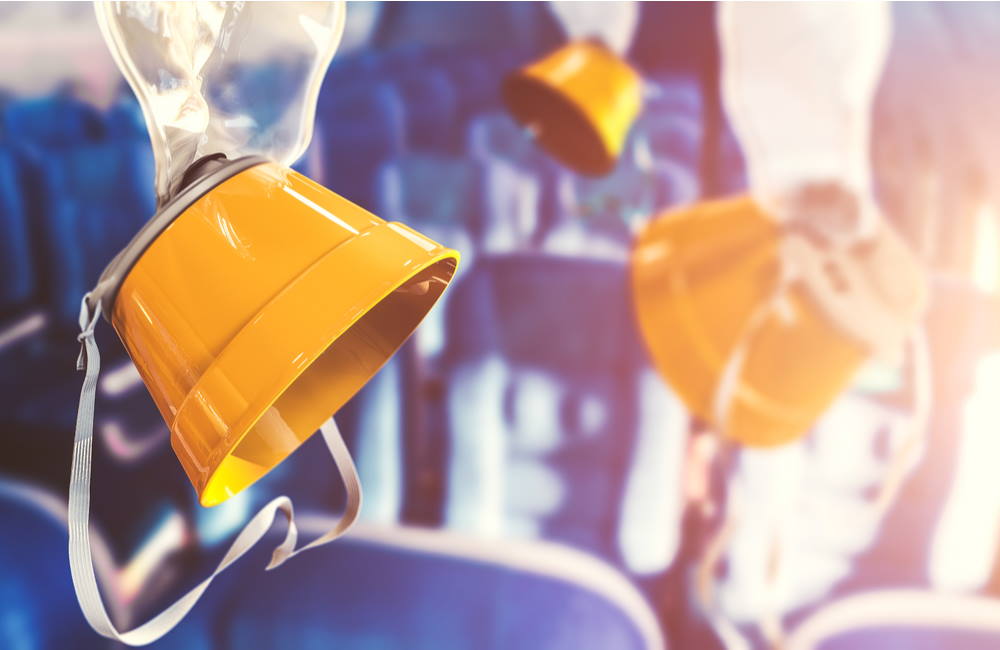Millions of people in the United States and billions around the world fly in an airplane every year. You’d think by now that many of the myths about flying would disappear, but some of them have a tenacious hold on people’s imagination.
Unlike air travel facts many people don’t know about, these myths are completely untrue. Many seem designed to scare people or, in some cases, just gross people out. With airplane travel picking up again, it’s a good time to dispel these myths.
8 Air Travel Facts You Didn't Know About
Some Persistent Myths About Flying
Like a game of “telephone” when you were a kid, myths tend to grow because as people pass a story along, details tend to change. Facts and context get lost. Then, before long, the story is something completely different or exaggerated beyond all recognition.
Here are a few myths about flying that many people continue to believe. Many of them come from a Reader’s Digest interview with pilots.
Germs Pass Easily on a Plane
Engineers fit planes with high-quality oxygen systems that recycle the air every one to three minutes, meaning that germs don’t easily travel from one end of the plane to another. Like most places, you’re only likely to pick up an illness from the people sitting directly next to you.
Pilots Fly Around the Bermuda Triangle
While planes have run into trouble while flying through what is known as the Bermuda Triangle – including some that have gone missing – airlines don’t route flights around it. That’s because tropical storms and vast stretches of ocean are the cause of crashes there, not diabolical forces. It’s the same situation in many other places in the world. Pilots today know how to avoid storms, and vast stretches of ocean are not a problem for modern jets on long-distance flights.
What Is The Best Seat on an Airplane?
People Can Open the Door In-Flight
Maybe it’s from the movies, but a persistent myth is that something terrible will happen if a passenger decides to open the cabin door while in flight. Except that is simply not possible. Safety features on commercial jets keep a door securely bolted shut during a flight, even if someone tries to open it.
You Can Get Sucked Into the Toilet
This one scares kids the most. It’s also not possible. While airplane toilets do create a vacuum that sucks everything down, the toilet seat does not have an airtight seal, meaning you won’t get sucked down into it.
Air Travel Is Not Safe
The opposite is true. Air travel ranks among the safest of all transportation methods. There’s more of a chance of being in an accident while driving your car a mile away from your house than there is in an airplane.
That’s Not Oxygen In Those Masks
Yes, it is. For some reason, people for years have repeated a rumor that the plane actually pumps some type of mixture through drop-down masks to keep people calm. Actually, it really does supply about 12 minutes of oxygen in the rare event a plane loses cabin pressure. This gives the pilot plenty of time to get the plane down to a level where people can breathe on their own.
7 Mistakes to Avoid While Travelling
Pilots Empty Plane Waste Mid-Flight
Ugh! Why this persists is unknown, but it’s one of the more popular myths about flying. The only thing pilots are allowed to dump mid-flight is water, and then only from the flight attendant’s sink, if needed. Toilets are not dumped mid-flight. It’s unsafe (something could stick to the plane and cause problems) and also completely disgusting.
Alcohol Has More Effect at High Altitude
Actually, it doesn’t, but it might have more effect on you once you land. Because people tend to dehydrate at high altitudes, and because alcohol causes further dehydration, people may feel tired and dehydrated by the time they land if they drink alcohol during the flight. But they won’t get a better “buzz.”
These are just some of the persistent myths about flying. As it turns out, plane travel is much safer – and in the case of the toilet myths, much less gross – than the myths make it seem.

